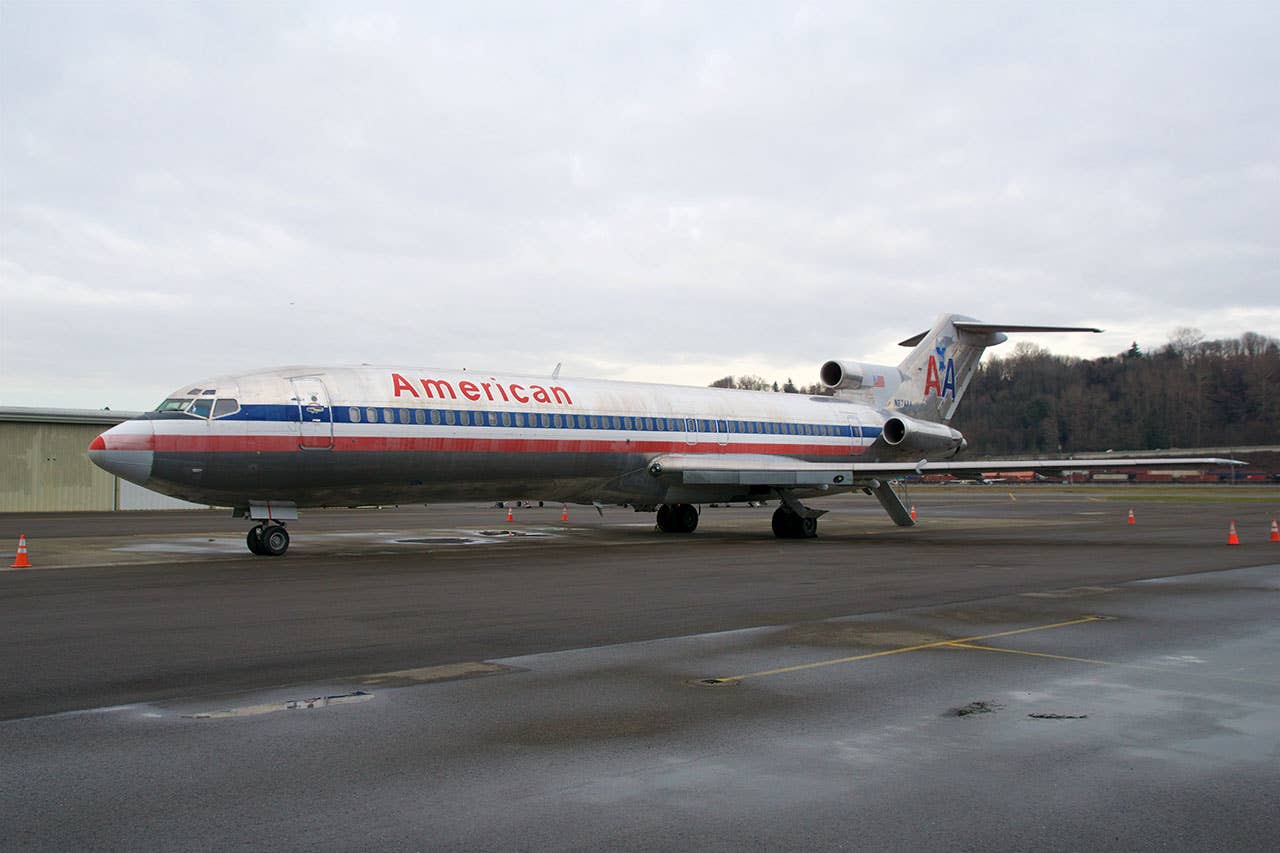Mysteries Of Flight: What Happened To Disappearing Boeing 727
In 2003, a Boeing 727 allegedly being piloted by a man with only a private pilot certificate took off from an airport in Angola and was never seen again.

A Boeing 727 trijet similar to the one that mysteriously went missing in Angola in the early 2000s.
Background
Shortly before sunset on May 25, 2003, air traffic control crews at the Quatro de Fevereiro International Airport in Angola noticed something quite peculiar. A Boeing 727-223, tail number N844AA, was taxiing erratically onto one of the runways. No attempts at contact with the tower were being made, and the aircraft departed southwest over the Atlantic Ocean with all lights off. The plane in question was unpainted silver, with red, white and blue stripes, and had recently been filled with 14,000 gallons of fuel, enough to travel up to 1,500 miles.
At the time of its disappearance, 844AA was being leased to a man named Keith Irwin. Irwin procured the aircraft in February of 2002 from a Florida-based aerospace company, owned by Maury Joseph, for use in delivering diesel fuel to diamond mines in Angola. But Irwin only used the plane for a brief time and quickly defaulted on his payments. Joseph eventually hired a certified aircraft mechanic, flight engineer and private pilot named Ben Charles Padilla to return the 727, now in disrepair, to a flight-safe condition so it could be repossessed. He scheduled an Air Gemini crew to fly it out on May 26, 2003, but when they arrived, they discovered the aircraft was already gone.
Padilla and John Mikel Mutantu, a mechanic from the Republic of the Congo, were last seen boarding the plane. Since the incident took place on the heels of the 9/11 terrorist attacks, the U.S. intelligence community went on high alert, searching for the aircraft across multiple countries, without result. It would seem 844AA and its crew had disappeared.
Insurance Fraud
It's no mystery that Joseph's 727 had been a thorn in his side since leasing it to Irwin. The two men had arranged a $1 million purchase agreement, whereby Irwin, who gave Joseph a $125,000 deposit, would have the aircraft paid off in full within 30 days. Yet over a year went by, and not only did he fail to meet his part of the agreement, but also the 844AA sat idle and accrued over $4 million in unpaid airport fees. Investigators initially believed that Joseph hired Padilla as part of an insurance scheme to recoup his losses. As it turned out, Joseph wasn't a stranger to fraud. The Securities and Exchange Commission had charged him just a few years prior with falsifying financial statements and defrauding investors. He was fined and banned from ever serving again as an officer in a publicly held company. But in this case, Joseph rang up the FBI and volunteered to take a lie detector test. He passed, leaving investigators scratching their heads.
Theft
Many believe that Padilla stole the aircraft for his own financial gain. While he technically only held a private pilot certificate, he was an expert in 727s and may have been trained to fly them. According to Joseph, Padilla's 727 expertise was precisely why he hired him to repair and repossess others prior to 844AA. Friends of Padilla allege that he flew it to an airstrip along Tanzania's western border, where he had it stripped and sold off for parts.
Hijack
The war on terror was in full swing at the time of 844AA's disappearance; it had only been two short years since the 9/11 attacks in the United States. Perhaps Padilla and Mutantu were taken hostage when they boarded the aircraft to finish prepping it for the next day's scheduled flight. If it was hijacked for nefarious purposes, it never made its target, and the U.S. government eventually closed its case.
No matter who took it or why, the question remains!
Where Did It Go?
It would seem as if 844AA literally disappeared off the radar. Some believe it was shot down by the Angolan Air Force over the Atlantic Ocean. Others contend it simply crashed somewhere shortly after takeoff. Either way, no debris has ever been recovered on land or sea. And, to date, no bodies have been recovered.
Conclusion
The timing of the aircraft's disappearance, on the eve of it being repossessed, couldn't have been coincidental. The most likely conclusion is that Padilla, a trained navigator, pilot, mechanic and flight engineer, either stole it for his own financial gain or did so at the instruction of Joseph. According to a Luandan pilot, 844AA was seen that night heading north and descending around Kinshasa, Congo. With no evidence of a crash ever found, it's entirely possible Padilla successfully made his destination, sold the aircraft off for parts and vanished again into the night.

Subscribe to Our Newsletter
Get the latest Plane & Pilot Magazine stories delivered directly to your inbox






